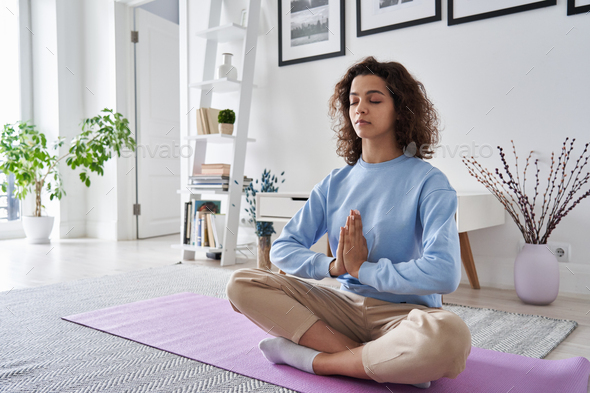Just How to Meditate: A Step-by-Step Approach to Getting Mindfulness and Tranquility
Reflection offers as a powerful device for accomplishing mindfulness and emotional calm in a hectic world. By recognizing the essential concepts and strategies involved in reflection, individuals can grow a practice that enhances their overall well-being.
Comprehending Meditation
Comprehending reflection entails understanding its essential concepts and methods, which work as the foundation for the method. At its core, reflection is a psychological exercise focused on advertising relaxation, developing interior power, and developing compassion and understanding. The method motivates people to focus their attention, typically through methods such as deep breathing, visualization, or mantra repeating.
Reflection can be categorized into various designs, consisting of mindfulness, transcendental, and loving-kindness meditation, each with distinct objectives and methods. Mindfulness reflection emphasizes present-moment recognition and non-judgmental monitoring of ideas and feelings, while transcendental reflection includes using certain mantras to go beyond ordinary mind. Loving-kindness reflection concentrates on establishing a mindset of love and empathy towards oneself and others.
No matter of the method utilized, the primary goal remains constant: to grow a much deeper understanding of the mind and its patterns. This self-awareness promotes emotional strength, clearness of idea, and a profound sense of calm (How to meditate?). By comprehending these concepts and techniques, people lay the foundation for an effective reflection practice that can considerably enhance their overall well-being
Preparing for Your Practice
Before starting your meditation practice, it is vital to develop an atmosphere conducive to focus and leisure. Guarantee that the location is clean and cost-free of mess, as a neat environment can help clear the mind.
Take into consideration the illumination, as natural light can improve your mood and power. Soft, warm lighting is frequently more relaxing than severe fluorescent lights. Additionally, select a comfy temperature, ensuring that you are neither as well hot neither as well chilly.
Incorporating elements that advertise peace can further enhance your experience. This may consist of soft cushions or coverings for convenience, as well as soothing aromas from important oils or scent. It can also be helpful to have actually a timer set for your meditation session to stop disturbances from clock-watching.
Basic Meditation Techniques

One more effective strategy is body scan reflection. This entails emotionally scanning your body from head to toe, seeing any kind of areas of tension or discomfort and purposely unwinding those muscle mass. This technique fosters a deeper link between your mind and body.

Finally, loving-kindness meditation concentrates on growing concern in the direction of on your own and others. Quietly repeat expressions of goodwill, enhancing emotional well-being and interconnectedness. Each of these techniques serves as a foundation for your reflection trip, enabling you to discover the method that reverberates finest with your personal practice.
Maintaining Focus and Mindfulness

Establishing a dedicated meditation area can boost the ability to preserve mindfulness. A silent, minimalist Look At This environment lessens distractions, enabling for much deeper immersion in the technique. Furthermore, setting a time frame can assist manage expectations; beginning with much shorter sessions might relieve the transition into longer techniques.
Making use of techniques such as body scanning or observing sensations can additionally bolster mindfulness. These methods encourage professionals to remain existing and engaged with their physicality, anchoring their focus in the minute. Normal technique is vital; the brain develops strength with time, developing a stronger capacity for focus.
Incorporating Meditation Into Daily Life
Incorporating reflection right into day-to-day live can transform routine tasks into opportunities for mindfulness and self-reflection. By incorporating mindfulness methods right into typical tasks, people can grow a higher feeling of existence and peace in the middle of the busyness of everyday life.
Begin by determining moments throughout your day where you can stop and exercise mindfulness. For circumstances, throughout your morning commute, concentrate on your breath or the experiences of the setting around you. In the kitchen, strategy cooking as a reflective method, savoring the textures, shades, and fragrances of the components. Also mundane activities like walking or cleaning recipes can end up being opportunities for reflection by directing your interest to the sensations of movement and the sounds surrounding you.
In addition, alloting devoted times for meditation can reinforce its technique. Start with short sessions, progressively increasing period as you end up being much more comfortable. Use suggestions or cues-- like a certain time of day or a soothing noise-- to develop uniformity.
Inevitably, the goal is to weave mindfulness right into the fabric of every day life, permitting you to go come close to each moment with intent, thereby boosting your overall feeling of well-being and quality.
Conclusion
In conclusion, efficient meditation needs a quiet atmosphere, a comfortable placement, and an emphasis on the breath. Normal reflection, even in short sessions, fosters a much look at this site deeper connection to the present moment, eventually leading to higher tranquility and psychological quality in day-to-day life.
Reflection can be classified right into various styles, consisting of mindfulness, transcendental, and loving-kindness meditation, each with distinctive purposes and methods. Mindfulness meditation highlights present-moment recognition and non-judgmental observation of feelings and ideas, while transcendental reflection involves the use of specific mantras to go beyond regular idea procedures.With your meditation area prepared, it's time to discover various fundamental reflection techniques that can assist grow mindfulness and inner peace.Continually preserving focus and mindfulness during reflection can be challenging, specifically for those new to the technique.Establishing a committed meditation area can enhance the capability to preserve mindfulness.